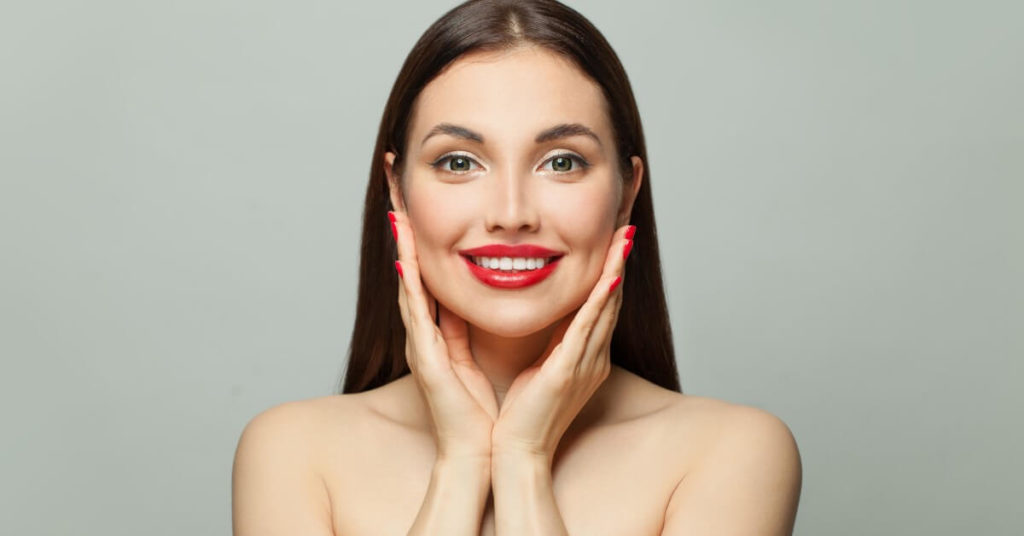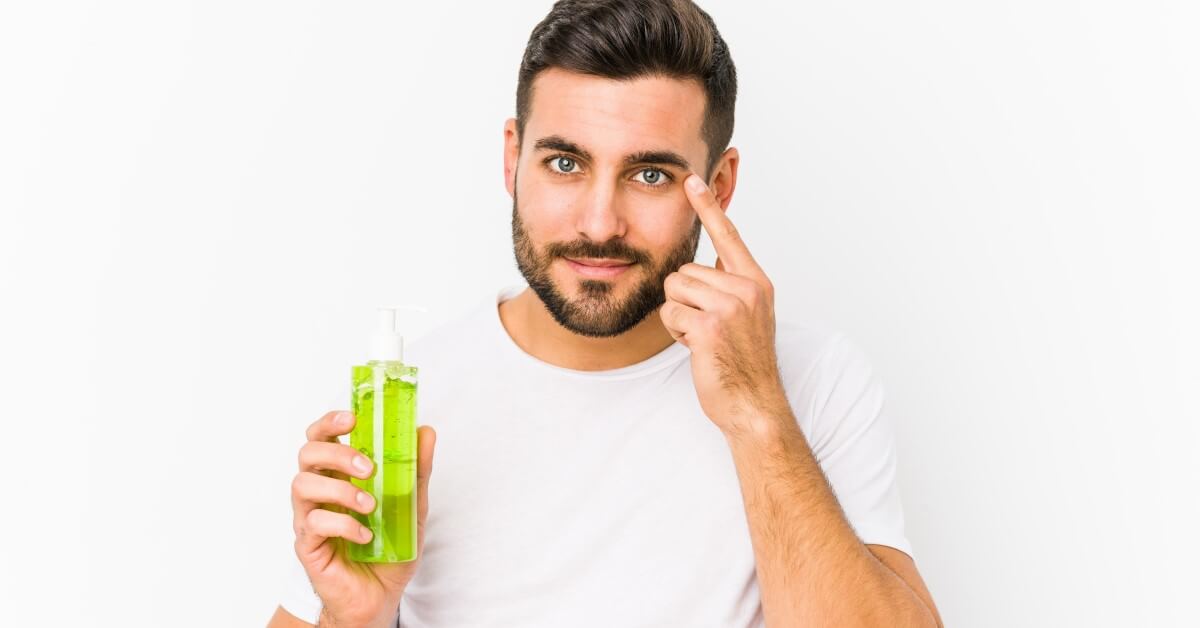
The Science of Skin, Hair, and Nails | Steps to Maintain Skin, Hair & Nails |
What’s the Takeaway?
Overview
Skin, hair, and nails. Most of us think of these in terms of their appearance, going to great lengths to care for these parts of our bodies with an endless array of shampoos, lotions, and conditioners.
There’s no question that keeping our skin, hair, and nails appealing with the multitude of available beauty products is a great way to boost self-esteem. More importantly, what you put inside your body has the most significant impact.
So, to show off your radiance to the outside world, you must start from the inside. Keep reading to find out more about skin, hair and nails and 5 steps you can take to keep them healthy.
The Science of Skin, Hair, and Nails
Skin, hair, and nails have their place in society as indicators of beauty and personal grooming. But they are highly capable protectors of our health.
All three are made of a similar type of protein called keratin. The primary biological function is to protect the inside of the body, temperature control, and conduction of moisture, helping to control the amount of water that comes into and leaves the body.
Their protective elements also impact the immune system by acting as a first defense against invasive pathogens like viruses or bacteria.
The skin conducts the absorption of vitamin D via the sun’s rays, which impacts the endocrine system. Skin also helps us detect sensations such as temperature and pain – both being early alert systems to injury that force us to take action before it can become more serious.
With such essential functions, it’s no wonder that countless products on the market promise strengthening, softening, and all kinds of other actions on skin, hair, and nails – despite a lack of evidence of their efficacy and not being regulated by the FDA.[1]
Steps to Maintain Skin, Hair & Nails
Of course, you can try any product on the market and see if it works. Some people swear by certain moisturizers or products that promise to boost collagen production. But there are some very reliable, natural ways to help your protectors.
1. Water
We are mostly made of water, so this one shouldn’t be too much of a surprise. Drink plenty of water to keep your body going. Water is especially effective for keeping skin moisturized and hair and nails strong: 75oz for women and 100oz for men is the recommended target for daily fluid intake.[2]
Don’t let that high number scare you – your daily water intake also comes from solid food and other non-dehydrating liquids such as milk, fruit juices, water-based vegetables, etc., but most should come from plain water, which is where the familiar “8 to 10 glasses of water per day” mantra comes from.
If you aren’t usually a water drinker, try adding lemon, lime, orange, or cucumber slices. If you feel experimental, add mint leaves, basil, ginger, rosemary, or cilantro. Sparkling water is nice, too, if you like some fizz.
2. Protein:
As mentioned earlier, your skin, hair, and nails are made of protein, so too factors into your hair, skin, and nail health. Dietary protein directly affects the production of keratin. Like all macronutrients, how much you need comes with many variables, but the current standard for most people is 20 percent of total daily calorie intake. What are some good proteins? Here’s a quick list in order from highest protein content to lowest:
· Lean meats and poultry
· Fish
· Meat substitutes, such as tofu, tempeh, and seitan
· Eggs
· Dairy
· Legumes
· Nuts
· Whole grains
3. Fats
In particular, Omega-3 fatty acids are essential nutrients that regulate the skin’s hydration and oil production. They are so powerfully beneficial for the skin that they have been used for therapies against premature aging, dermatitis, and even cancer.[3]
Fatty fish like salmon, mackerel, and herring are the best sources.
If fish is not your thing, the next best method of taking omega-3s is via fish oil. If this is out of your comfort zone, you can opt for a capsule form, namely 500mg per day or about two servings of fatty fish per week are all you need to start enjoying supple, radiant, and healthy skin.
Nuts are also packed with essential fats plus vitamin E. This vitamin has been linked to stronger, fuller hair.[5] A handful a day is all you need to reap the benefits of these delicious and incredibly healthy snacks. Just try not to go overboard – they are calorically dense and add up very quickly.
4. Sleep
Beauty sleep may sound like a tired (pardon the pun) cliche, but it is not a myth. A South Korean study showed that even after only one night of sleep deprivation, multiple skin parameters showed negative changes with decreased skin hydration and elasticity, enlarged pores, and impaired protective capabilities.[4] Healthy skin is only one benefit of what quality sleep can do for your body and mind, so make sure you get your Centers for Disease Control and Prevention (CDC)-recommended 7-9 hours of sleep each night.
Stick to a regular sleep-wake cycle every day, keep your bedroom cool and dark, avoid heavy or spicy foods and alcohol close to bedtime, avoid daytime naps, and stay away from stimulating electronics like tablets or smartphones before bed as well. If you experience sleep problems for three months or more, speak with your doctor.
5. Sun Exposure
Experts recommend 5-30 minutes of sun exposure (people with light skin color should be on the lower end of the scale while those with darker skin can be in the higher ranges) at least two times per week for sufficient, natural vitamin D production – itself an essential nutrient that regulates inflammation in the body.[6] However, this comes with a caution: long-term exposure to the sun’s rays causes premature skin aging, more wrinkles, altered pigmentation, and loss of tone and elasticity.[7] So, when you go outside (even on cloudy days), use a full-spectrum sunscreen that protects against UVA and UVB radiation with an SPF of at least 30.
What’s the Takeaway?
There are products galore that promise smoother, firmer skin, a thick head of hair, and strong, healthy nails. Granted, some of them can be effective in keeping your vital protective layer healthy and appealing, but as with so many other aspects of life, nothing beats getting as close to nature as possible.
Use these tips to keep your shield functional and beautiful for a lifetime.
References:
- Perez-Sanchez, A. C., Tantry, E. K., Burns, E. K., Perez, V. M., Prabhu, S., & Katta, R. (2020). Skin, Hair, and Nail Supplements: Marketing and Labeling Concerns. Cureus, 12(12), e12062. https://doi.org/10.7759/cureus.12062
- Meinders, A. J., & Meinders, A. E. (2010). Hoeveel water moeten we eigenlijk drinken? [How much water do we really need to drink?]. Nederlands tijdschrift voor geneeskunde, 154, A1757.
- Huang, T. H., Wang, P. W., Yang, S. C., Chou, W. L., & Fang, J. Y. (2018). Cosmetic and Therapeutic Applications of Fish Oil’s Fatty Acids on the Skin. Marine drugs, 16(8), 256. https://doi.org/10.3390/md16080256
- Kim, M. , Kim, E. , Kang, B. and Lee, H. (2017) The Effects of Sleep Deprivation on the Biophysical Properties of Facial Skin. Journal of Cosmetics, Dermatological Sciences and Applications, 7, 34-47. doi: 10.4236/jcdsa.2017.71004.
- Beoy, L. A., Woei, W. J., & Hay, Y. K. (2010). Effects of tocotrienol supplementation on hair growth in human volunteers. Tropical life sciences research, 21(2), 91–99.
- Mead M. N. (2008). Benefits of sunlight: a bright spot for human health. Environmental health perspectives, 116(4), A160–A167. https://doi.org/10.1289/ehp.116-a160
- Fisher, G. J., Wang, Z. Q., Datta, S. C., Varani, J., Kang, S., & Voorhees, J. J. (1997). Pathophysiology of premature skin aging induced by ultraviolet light. The New England journal of medicine, 337(20), 1419–1428. https://doi.org/10.1056/NEJM199711133372003


